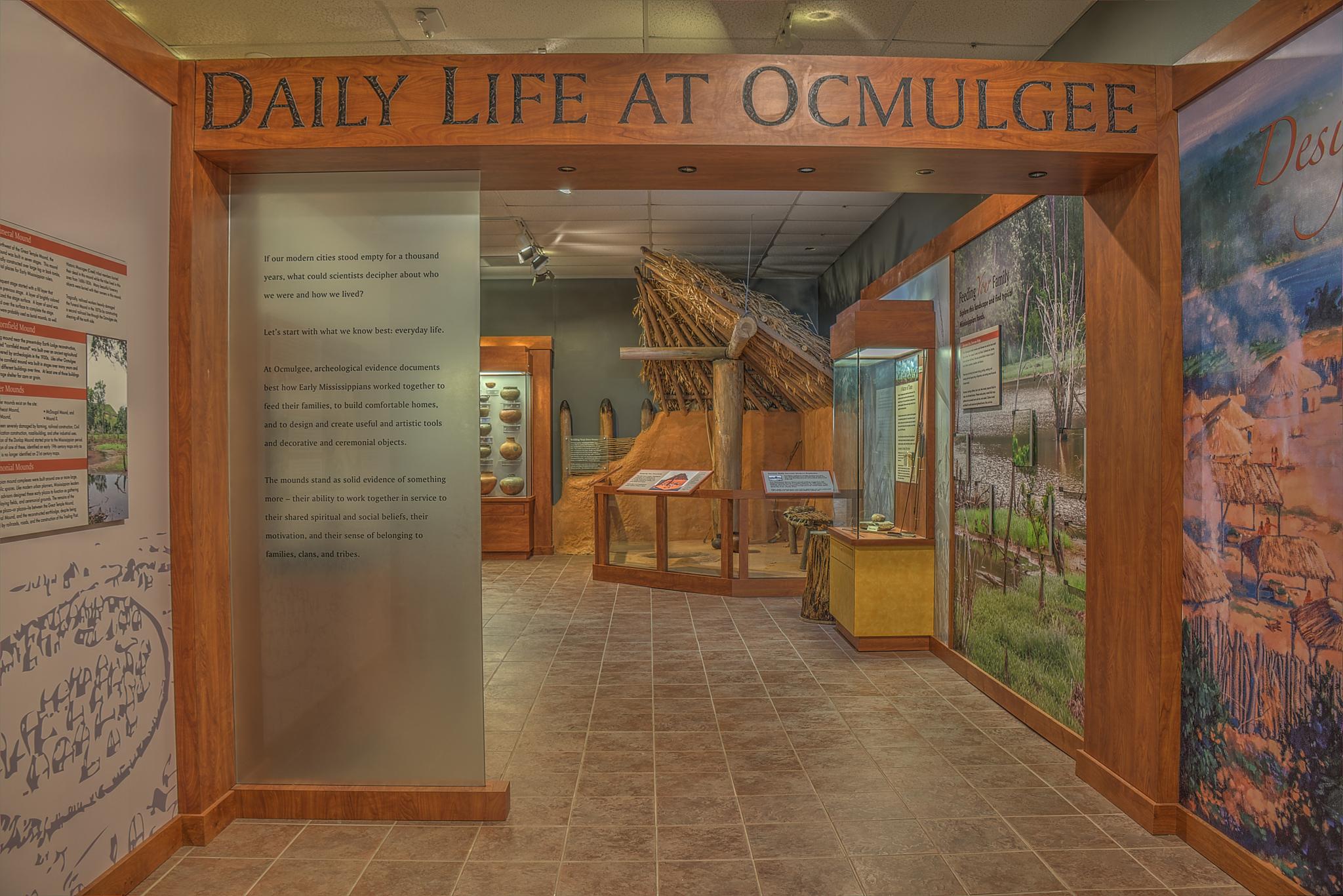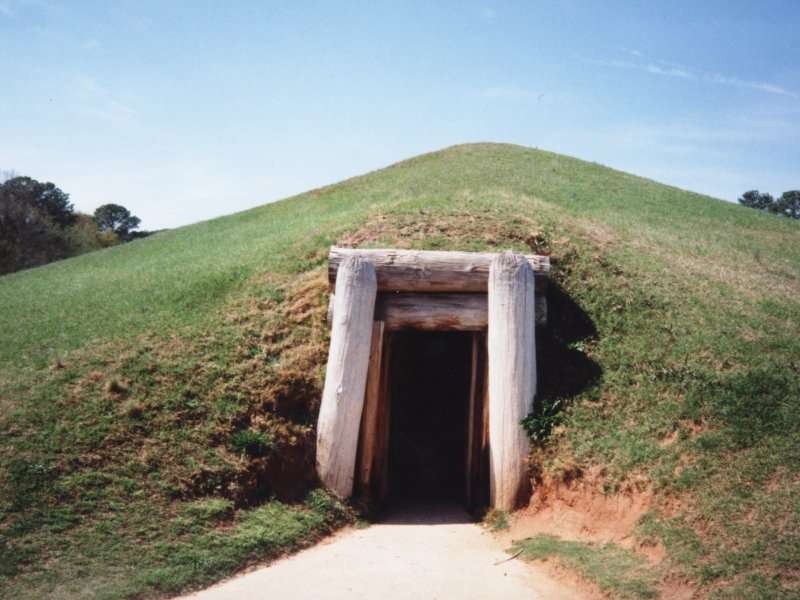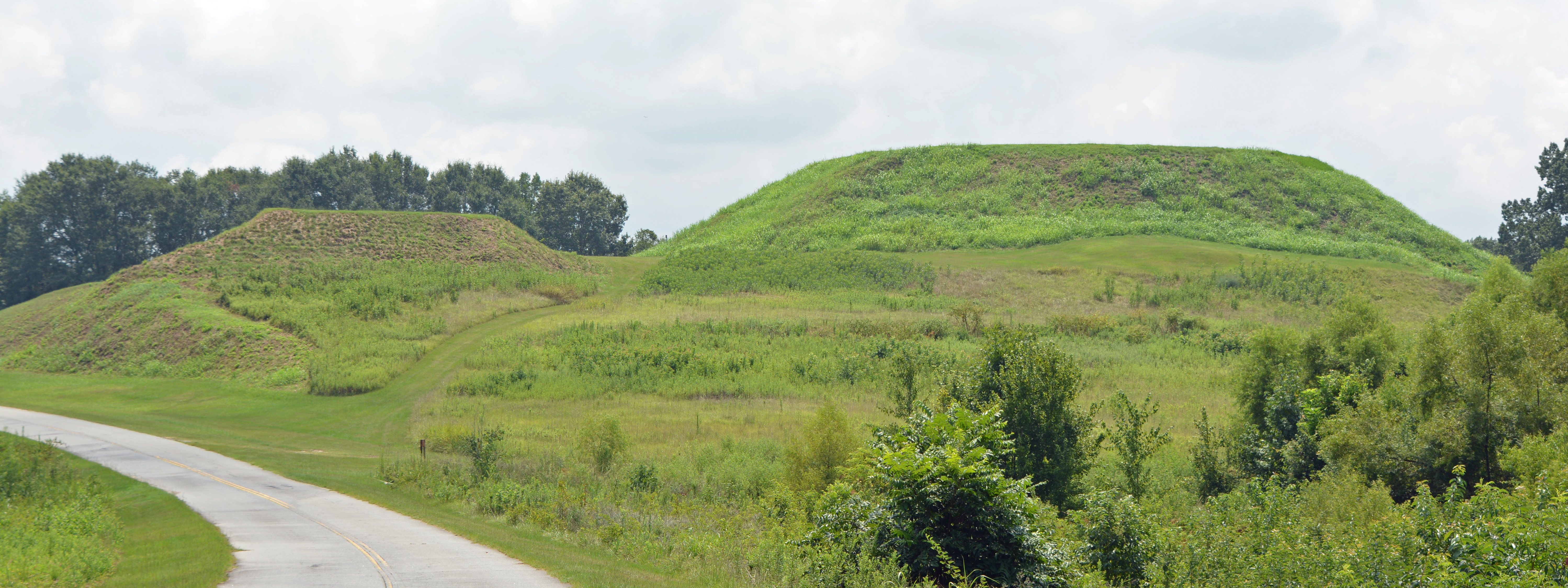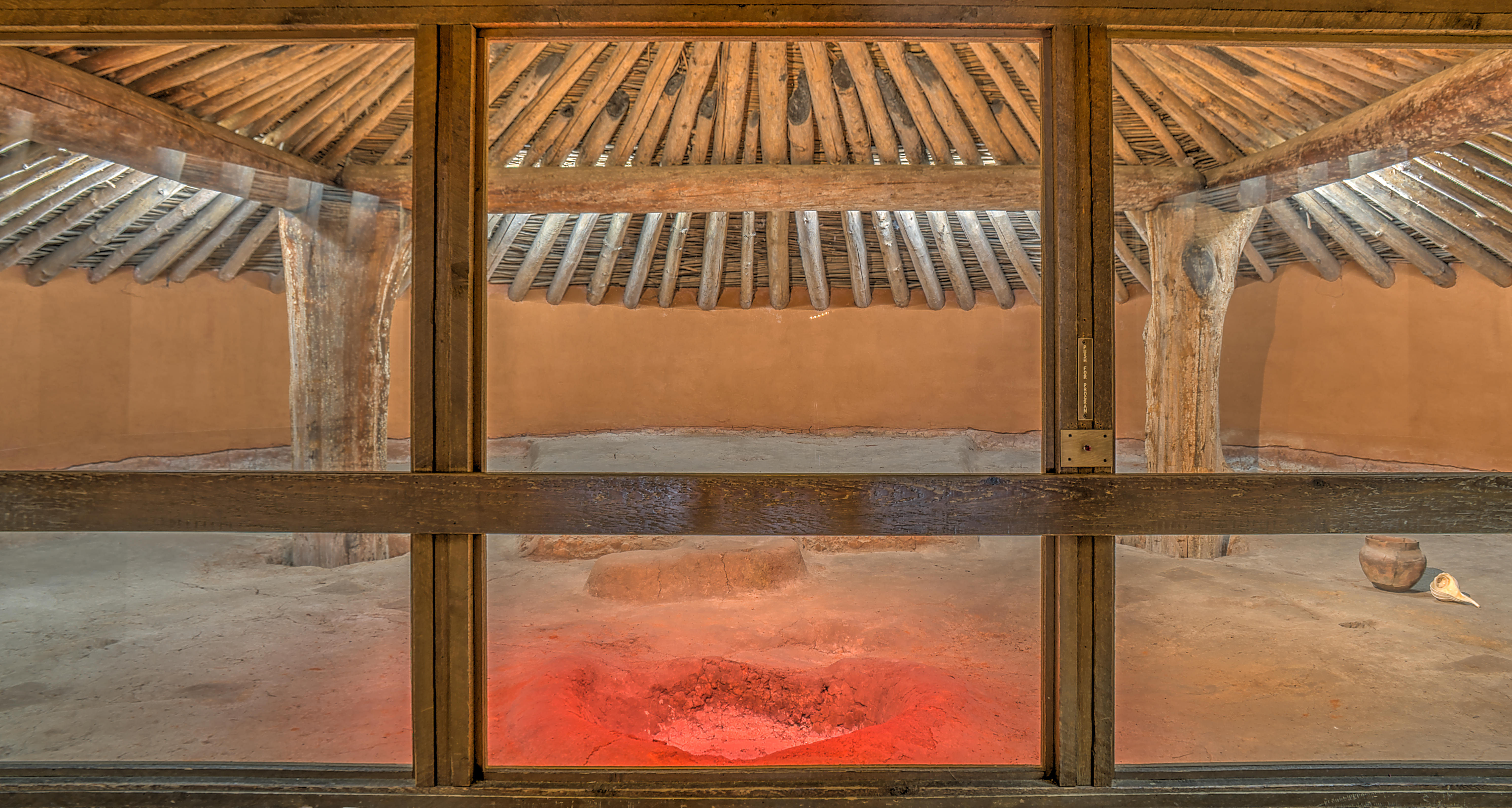Ocmulgee Mounds National Historical Park (Ga.)
Enlarge text Shrink text- Work cat.: Marsh, A. Ocmulgee National Monument, 1986.
- Lippincott.
- Old catalog heading(Ocmulgee National Monument)
- Web. geog.
- United States. National Park Service. Ocmulgee Mounds National Historical Park, Georgia, 2021.
- United States. John D. Dingell, Jr. Conservation, Management, and Recreation Act, 2019:133 STAT. 724 (Sec. 2102. Ocmulgee Mounds National Historical Park Boundary. (1) Redesignation--(A) In General--The Ocmulgee National Monument established pursuant to the Act of June 14, 1934 (48 Stat. 958, chapter 519), shall be known and designated as the "Ocmulgee Mounds National Historical Park")
Ocmulgee Mounds National Historical Park (formerly Ocmulgee National Monument) in Macon, Georgia, United States preserves traces of over ten millennia of culture from the Indigenous peoples of the Southeastern Woodlands. Its chief remains are major earthworks built before 1000 CE by the South Appalachian Mississippian culture (a regional variation of the Mississippian culture.) These include the Great Temple and other ceremonial mounds, a burial mound, and defensive trenches. They represented highly skilled engineering techniques and soil knowledge, and the organization of many laborers. The site has evidence of "12,000 years of continuous human habitation." The 3,336-acre (13.50 km2) park is located on the east bank of the Ocmulgee River. Macon, Georgia developed around the site after the United States built Fort Benjamin Hawkins nearby in 1806 to support trading with Native Americans. For thousands of years, succeeding cultures of prehistoric indigenous peoples had settled on what is called the Macon Plateau at the Fall Line, where the rolling hills of the Piedmont met the Atlantic coastal plain. The monument designation included the Lamar Mounds and Village Site, located downriver about three miles (4.8 km) from Macon. The site was designated for federal protection by the National Park Service (NPS) in 1934, listed on the National Register of Historic Places in 1966, and redesignated in 2019 as a national historical park.
Read more on Wikipedia >
 Place
Place















